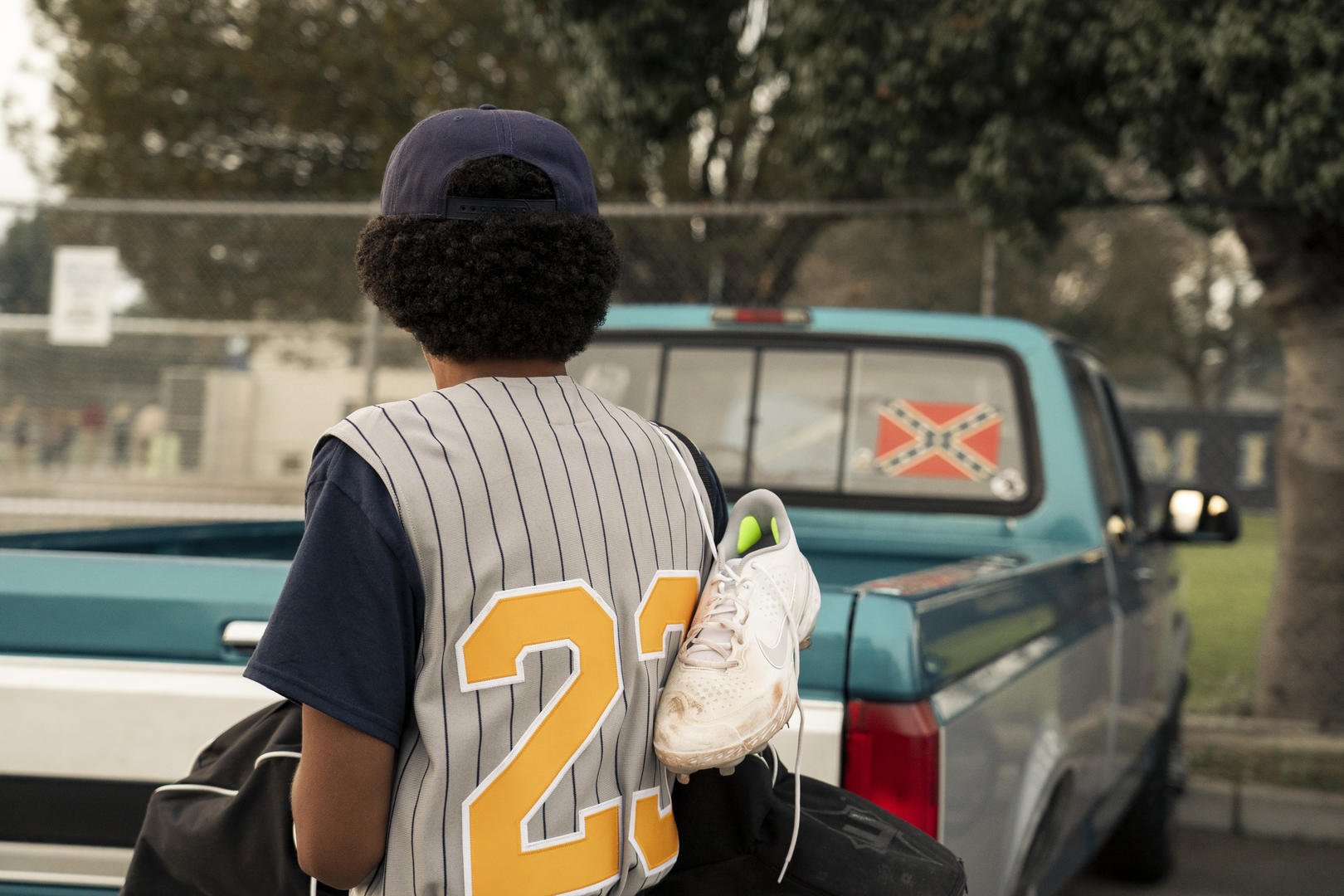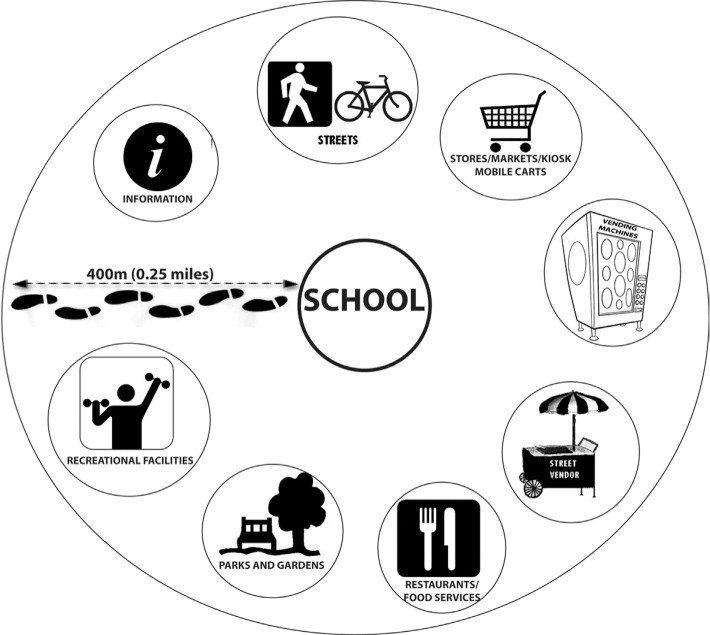Key themes
Power, Systemic Racism, Criminalization
Learners will trace the myth of Black criminality in the United States through the twentieth century, making the connection between criminalizing space and people based on race and geography.
Objectives
At the end of this lesson, participants will be able to:
- Analyze whether the places they live impact the opportunities they are given and how they are perceived
- Discover new information about their communities
- Take action to improve the narrative of where they live or attend school
Key themes
Power, Systemic Racism, Criminalization
Learners will trace the myth of Black criminality in the United States through the twentieth century, making the connection between criminalizing space and people based on race and geography.
Objectives
At the end of this lesson, participants will be able to:
- Analyze whether the places they live impact the opportunities they are given and how they are perceived
- Discover new information about their communities
- Take action to improve the narrative of where they live or attend school

LESSON TWO
2.2 Introduction
Black Codes
The 13th Amendment to the U.S. Constitution, passed by Congress on January 31, 1865, abolished slavery in America. Or did it? Congress passed the 13th Amendment with a slavery “loophole.” Slavery was outlawed “Except as punishment for a crime whereof the party shall have been duly convicted.” White Americans exploited this loophole to help rebuild America’s economy after the Civil War — they arrested Black Americans for minor crimes to get free human labor.
Following the passage of the 13th Amendment, states began adopting Black Codes, which enforced racial segregation and the policing of Black bodies. Out of these Black Codes came practices such as convict leasing and other methods of forced labor.
Mississippi was the first state to pass Black Codes during the Reconstruction era, soon followed by other states like Alabama, Arkansas, Florida, Georgia, the Carolinas, Tennessee, Texas and Virginia, along with other northern states. These laws covertly, and sometimes overtly, discriminated against formerly enslaved people as they sought to find employment, purchase land, start businesses and families and function as citizens of the United States.
The laws varied from state to state, but a common theme included harsh rules around vagrancy and assembly, similar to those found in the fugitive slave laws of previous years. But this wasn’t the first time that those in power in the United States had attempted to control where Black people in America could live or thrive. Beginning in the 1630’s legislation was put in place to determine where free Black citizens could assemble. Throughout the decades, each attempt at equality between people of color and white citizens was met with legislation that offered the opposite.
Watch and Reflect
The Black Codes, Slave Codes and eventually Jim Crow Laws were simply slavery by another name.
W. E. B. Du Bois wrote in Black Reconstruction in America, “These codes were simply the old black codes of the state, with the word ‘slave’ expunged, and ‘Negro’ substituted. The most odious features of slavery were preserved in them.” In Colin In Black & White, Colin experiences bias and discrimination when pulled over by a police officer.
Watch the video and answer the reflection questions that follow.
Reflection Questions
- 1 | Name a time when you felt unfairly accused of something. What was it? Was it a true assessment of your behavior?
- 2 | Compare the policing of free African Americans under the Black Code Laws to Colin’s interaction in the clip with the police officer. What are the similarities?
- 3 | Can you name any systems or rules in place in your community today that unfairly target non-white citizens? What are they? Can they be changed? If so, how?
- 4 | In Colin in Black and White, young Colin experiences microagressions and discrimination while visiting hotels with his high school baseball team. Has there ever been an instance where you felt you didn’t belong in a place or space that was seemingly “open” to you?
- 5 | Are there spaces in your community or school that seem inviting to some but unwelcoming to others? What can be done to make them feel welcoming to all?
ZIP Codes: A Brief History
The idea of Zone Improvement Plan Codes, or ZIP Codes, started in the mind of Postal Inspector Robert Moon. By 1944 his concept for a three-number system was used in large cities to handle the significant increase in mail following World War II. In 1963, the U.S. Postal Service decided to introduce ZIP Codes across the nation. They even created Mr. ZIP, a cartoon character who was seen everywhere. Schools had lessons to teach students about ZIP Codes. Soon ZIP Codes became a regular part of the American conversation.
ZIP Codes: Uses and Misuses
As ZIP Codes grew in popularity, so did the ways we used them. At first ZIP Codes were designed to automate mail sorting so that mail could get delivered efficiently. Over time, ZIP Codes became a tool used by many people and organizations for many purposes. “ZIP Codes were created to expedite mail processing, not to identify neighborhoods or regions,” writes geographer Matt Rosenberg. “ZIP Code data is not appropriate for many geographic purposes but has, unfortunately, come to be the standard for dividing up cities, communities or counties into different neighborhoods,” he continues.
With any innovation, there is always the possibility of both good and bad uses. When put to good use, ZIP Codes can help monitor air quality in cities or ensure that needed health resources get to rural areas. When ZIP Codes are misused, the consequences for some are often harmful and even life-altering.
Here are four ways we use ZIP Codes:
- Banks and financial services calculate risk profiles for mortgage and loan applications by geography
- Insurance providers calculate risk premiums by geography
- Real estate companies price and list properties for rent and for sale
- Schools and school districts determine school attendance boundaries and transportation plans
- Banks and financial services calculate risk profiles for mortgage and loan applications by geography
- Insurance providers calculate risk premiums by geography
- Real estate companies price and list properties for rent and for sale
- Schools and school districts determine school attendance boundaries and transportation plans
These examples can be both positive and negative. Because of the systemic nature of oppression and racism, there are times when the policies and practices of banks, real estate companies, school systems and insurance providers combine and work together to discriminate against and otherwise harm people. This results in experiences like redlining areas for loans and undervaluing properties.
LESSON TWO
Activity I: What’s the Codeword?
Looking at lots of data can be overwhelming, but taking a closer look at numbers to find the story behind the data can be empowering. Are you ready for the challenge? Let’s get started!
Procedure
Your challenge for the following activities is to become a data detective searching for information about your ZIP Code. You will then use that information to reframe and retell the story of your neighborhood.
Create a two-person team or work alone.
Watch the “What’s Your Zip Code Story?” video.
Read the story of how ZIP Codes almost blocked the truth about the Flint, Michigan water crisis. As you read, ask yourself: What are three points worth remembering, and what was the main problem with using ZIP Codes only in this situation?
Compare your notes with those of your teammate: How did researchers use geocoding to compare lead levels?
Continue to the next section.
LESSON TWO
Activity II: Southside, Westside, Uptown, Downtown
Procedure
Someone you know has said something negative about your neighborhood or school based on what they think they know about your ZIP Code or neighborhood. You look at them and wonder, “Is this the truth? What do they know?” You also wonder, “What do I know?” You decide to put your data digging skills to good use.
CREATE a two-person team or work alone.
WATCH the “Does My Neighborhood Determine My Future?” video. Can where you live provide you with privilege?
PERFORM the data research in the next section. Find the ZIP Code of your home or school address. Use the Distressed Communities Index (DCI) database for your research.
Procedure
Someone you know has said something negative about your neighborhood or school based on what they think they know about your ZIP Code or neighborhood. You look at them and wonder, “Is this the truth? What do they know?” You also wonder, “What do I know?” You decide to put your data digging skills to good use.
CREATE a two-person team or work alone.
WATCH the “Does My Neighborhood Determine My Future?” video. Can where you live provide you with privilege?
PERFORM the data research in the next section. Find the ZIP Code of your home or school address. Use the Distressed Communities Index (DCI) database for your research.
Distressed Communities Index
- After entering your ZIP Code, scroll down to view your DCI score and DCI factors.
- What percentage of residents have a high school diploma?
- What is the median household income?
- Repeat this for another nearby ZIP Code that you consider a "better" or "worse" part of town.
Your Local Schools
- Find a "high performing" public high school ranked 7/10 or above and the name of a "low performing" school ranked 4/10 or below in your Zip Code. Use (greatschools.org).
- What are the College Readiness scores for the schools? Does each school offer advanced courses?
- What are the graduation rates?
Crime Grades
- Learn the Crime Grade for the ZIP Code where you live or attend school. Go to crimegrade.org.
- What is your home or school’s Crime Grade?
- Scroll down to see the maps and Crime Grades for nearby areas. What do the Crime Grades tell you about where you live?
- Is this an accurate representation of your community?
LESSON TWO
Activity III: Roll Out: Perform an Environmental Scan Data Walk
When you conduct an Environmental Scan Data Walk, it is important to identify a focal point and then walk a ⅛ to a ¼ mile radius around the focal point. The focal point could be your home or one of the schools or communities you have researched. As you scan or look around at the environment, gather quantitative data (data that you can count) and qualitative data (data about characteristics). You might count the number of stores you see or note the various kinds of stores.
Always conduct an Environmental Scan Data Walk in a group of at least three for safety and security.
Answer the discussion questions in the next section.
LESSON TWO
Discussion Questions
Now that you’ve learned more about your community, answer the following questions.
- 1 | What are the assets or gifts of your community?
- 2 | What is the best part or the points of pride?
- 3 | What were areas of strength in the past and what are areas of strength now?
- 4 | How do people use ZIP Codes to determine the value and viability of an area?
- 5 | President Barack Obama noted that a person’s ZIP Code shouldn’t decide their destiny. Does where you live reflect who you are today and what you desire to do in the future?
Reframe and retell the story of your ZIP Code using data storytelling and data visualization. How might you tell the story of the ZIP Codes of where you live, the two schools, and the two communities you studied? How would you visualize the data to tell a story that communicates more than meets the eye? Use “Let’s Practice Storytelling With Data” and Juicebox (free registration) to help you share your story in a compelling, visual way.
Additional Resources
The DIG History Podcast breaks down laws in the U.S., including Black Codes, Slave Codes and Jim Crow, that have governed the bodies of Black American citizens. To learn more about this topic, LISTEN HERE.



